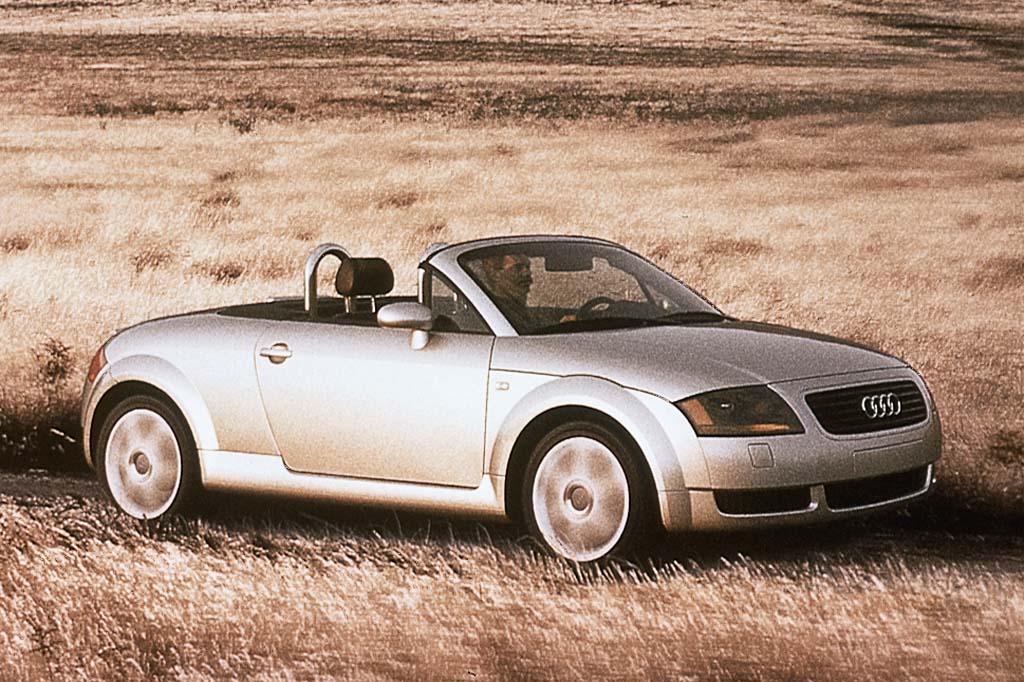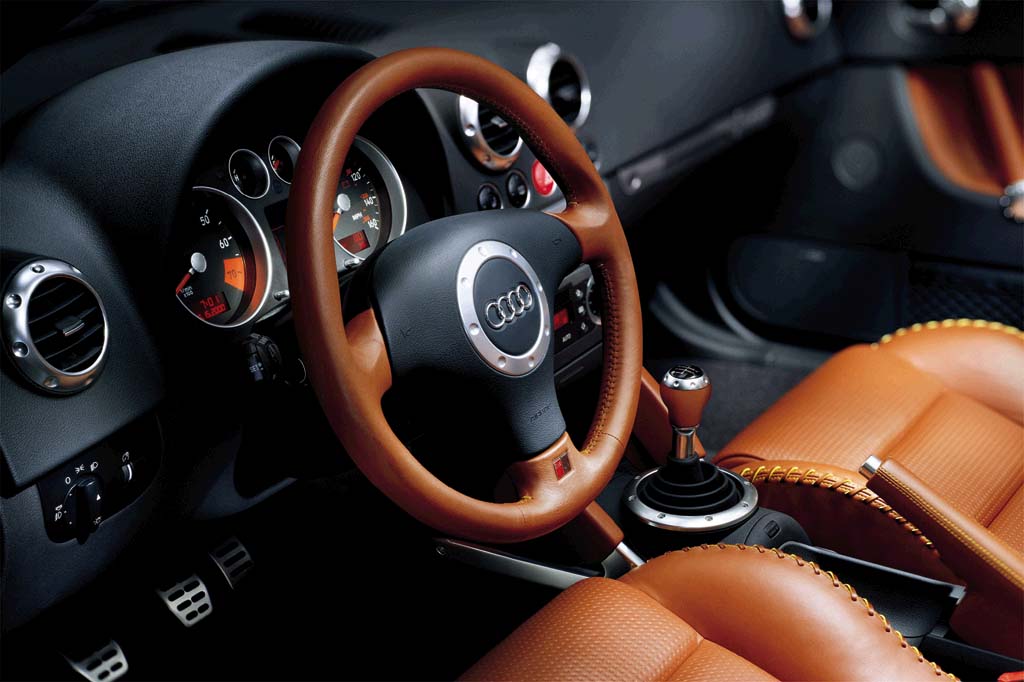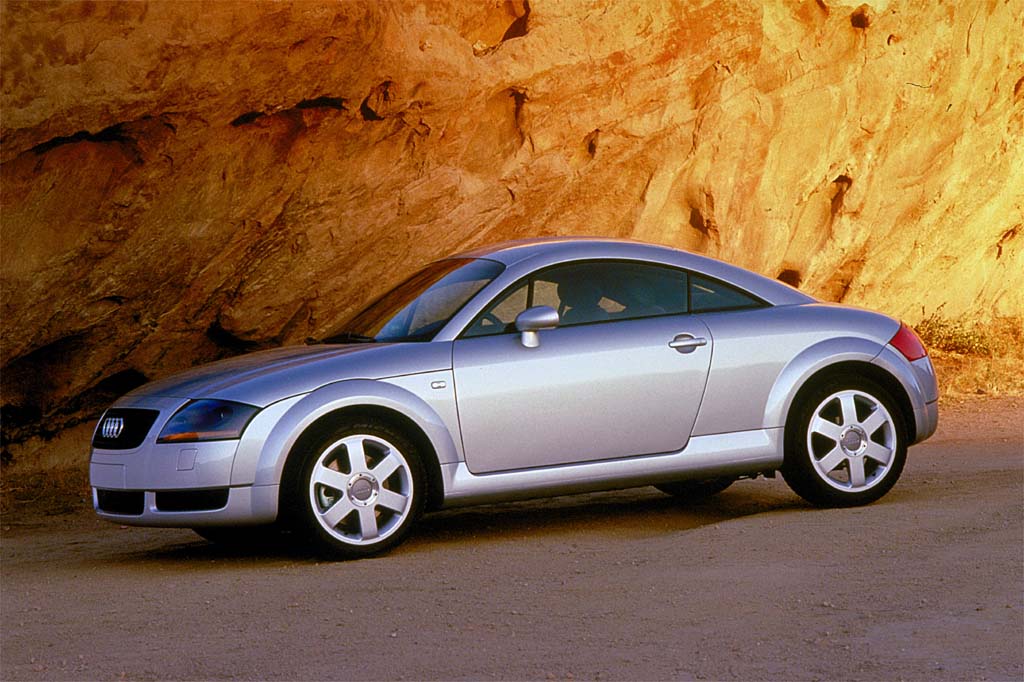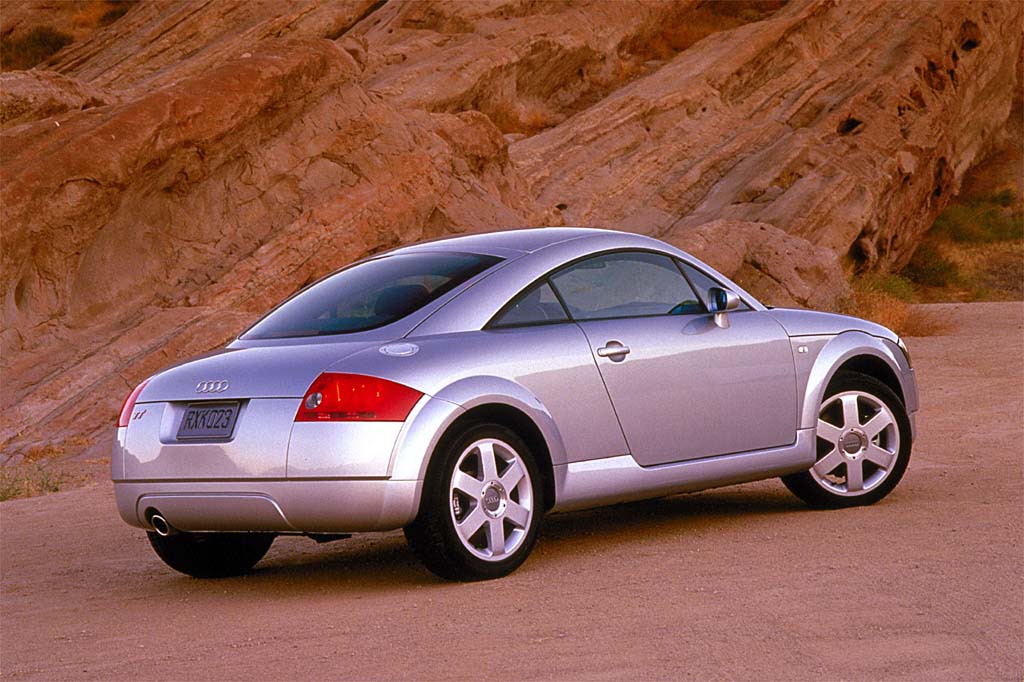| Premium sporty/performance car; Built in Hungary |
|
|
| Good condition price range: $4,700 – $16,800* |

2001 Audi TT 2-door convertible

2001 Audi TT 2-door convertible

2001 Audi TT interior

2000 Audi TT 2-door coupe

2000 Audi TT 2-door coupe
| Pros: |
|
| Cons: |
|
A TT offers practical sports-car fun, with a style and personality all its own. It’s a bit like the New Beetle in terms of differing smartly from the automotive pack, but despite a few drawbacks, the TT delivers a truly sporty experience along with its high style.
Overview
Launched in spring 1999 as an early 2000 model, Audi’s sports/GT coupe initially came only as a front drive 2+2 hatchback. In summer 2001, the coupe became available with Quattro all-wheel drive.
Nothing on the market looks anything like a TT, though its roofline is reminiscent of Volkswagen’s New Beetle. If the TT has any real rivals, they might include the BMW Z3, Honda Prelude and S2000, and Mazda Miata. You’d never know it by looking, but the TT was built on a shortened version of the Audi A4 platform, also used by Volkswagen’s New Beetle, Golf, and Jetta. The TT was shorter and lower, however, with firmer suspension tuning.
Under the hood sat a 180-horsepower version of the turbocharged four-cylinder engine used in the A4 and the New Beetle, driving a five-speed manual transmission. No automatic transmission was available. Antilock all-disc braking and front head/chest side airbags were standard. Traction control also was standard on the front drive TT.
Yearly Updates
| 2001 TT A two-passenger soft-top Roadster joined the original coupe in spring of 2000, as an early 2001 model. Also new were a standard Electronic Stability Program (ESP) to help prevent skidding, a rear spoiler, and a 225-horsepower rendition of the TT’s turbocharged four-cylinder engine, driving a six-speed manual gearbox. Audi’s Quattro all-wheel-drive system was standard on the Roadster and 225-horsepower coupe, and optional for the 180-bhp coupe. A power top was standard on the Quattro Roadster, but optional if the convertible had front drive. Both Roadsters had heated glass rear windows. A power-retractable glass windblocker went between the structural roll bars behind the headrests. |
| 2002 TT Added midyear to mark Audi’s participation in American LeMans Series racing were 1000 limited-production 225-hp ALMS coupes with 18-inch wheels and special trim. Also new for 2002 was a new radio with in-dash CD. |
| 2003 TT Base models had a 6-speed automatic for the first time. Optional wheels on the 225-hosrepower model were now 18 inches. |
| 2004 TT New for ’04 is a 250-hp V6 engine standard on Audi’s new V6 quattro TT, and now-standard xenon headlights. Also added mid-year was Audi’s Direct Shift Gearbox, a clutchless manual that can be set to shift like an automatic. |
| 2005 TT The TT saw no changes in 2005. |
| 2006 TT Available satellite radio is the only change for 2006. |
